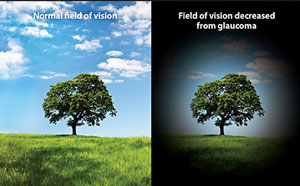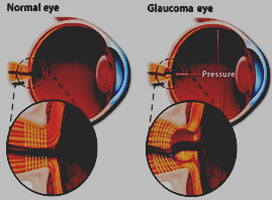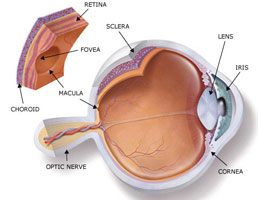Glaucoma (Part two)
Angle-closure glaucoma can appear suddenly and is often accompanied by pain. Vision loss can progress quickly, but discomfort leads most patients to seek medical help before permanent vision damage occurs. In angle-closure glaucoma, the angle between the cornea and the iris is completely closed, preventing the flow of eye fluid from the posterior chamber to the anterior one and out through the trabecular meshwork.

Open-angle glaucoma progresses slowly; patients may not notice they have lost vision until the disease has significantly advanced. In open-angle glaucoma, the flow of eye fluid is reduced due to damage and closure of the trabecular meshwork, whose original function is to absorb the eye fluid.
The increase in intraocular pressure exerts pressure on the vitreous body (corpus vitreous), which further pushes the retina towards the choroid, compressing the blood vessels that supply the retina with blood. Without sufficient blood supply, retinal cells die, and the optic nerve atrophies, causing blindness.


The nerve fibers farthest from the focal point fail first, due to the distance from the central blood supply, thus vision loss in glaucoma begins at the periphery of the visual field, progressively worsening the so-called “tunnel vision”.

Normal optic nerve fibers - Damaged optic nerve fibers - “Tunnel vision”
Glaucoma has been called the “silent thief of sight” because vision loss occurs gradually over a long period, and symptoms present when the disease is quite advanced. Once vision is lost, it cannot be restored, so the goal of treatment is to prevent the disease from progressing.
Risk factors
- age – individuals over the age of 60 have an increased risk for this disease. The risk for developing glaucoma increases with passing years.
- Positive family history of glaucoma.
- physical eye injuries – eye trauma
- other eye-related risk factors – cornea thickness, eye tumors, eye inflammation, retinal detachment.
- use of corticosteroids
Signs and symptoms
Open-angle glaucoma is not accompanied by pain. The only signs are:
- gradual progressive loss of visual field
- changes in the optic nerve